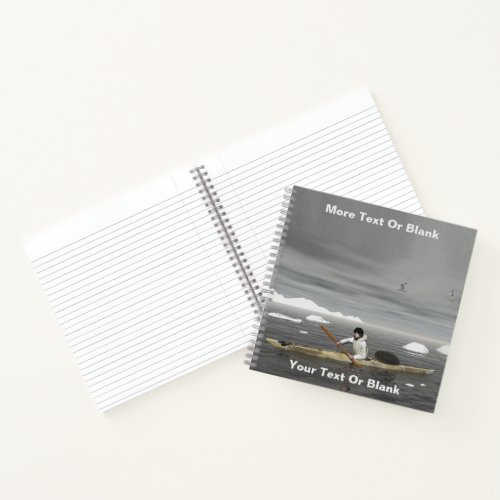Inuit Kayak - Alaska Postage Notebook



An Inuit hunter paddling his kayak on a gray day. Text reading, "Alaska", "Inuit Qajaq", and "Postage 5 Nuggets" also appears. Customize by adding your own text. Kayaks (Inuktitut: qajaq) were originally developed by indigenous Arctic people, who used the boats to hunt on inland lakes, rivers and coastal waters of the Arctic Ocean, North Atlantic, Bering Sea and North Pacific oceans. These first kayaks were constructed from stitched seal or other animal skins stretched over a wooden frame (made from driftwood, since many of their habitats were treeless). Kayaks are at least 4,000 years old. A kayak (sometimes generalised as a canoe) is a small human-powered boat that traditionally has a covered deck, and one or more cockpits, each seating one paddler who strokes a double-bladed paddle. The cockpit is covered by a spraydeck (skirt) that keeps the inside of the boat (and the paddler's lower body) dry. The spraydeck or similar waterproof covering attaches securely to the edges of the cockpit, preventing the entry of water from waves or spray, and making it possible, in some boats, to roll the kayak, capsizing and righting the boat without it filling with water or ejecting the passenger. Some modern kayaks have modified the traditional design in a variety of way, such as eliminating cockpits, seating the paddler(s) on top of the boat, having inflated air chambers surrounding the boat, and replacing paddles with other propulsion methods. Kayaks are generally differentiated from canoes by the sitting position of the paddler and the number of blades on the paddle. In a kayak the paddler faces forward, legs in front, using a double bladed paddle. In a canoe the paddler faces forward and sits or kneels in the boat, using a single bladed paddle. In some parts of the world, such as the United Kingdom, kayaks are considered a subtype of canoes.


